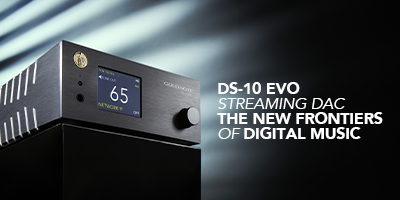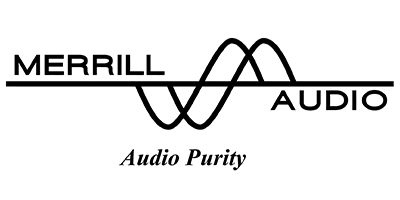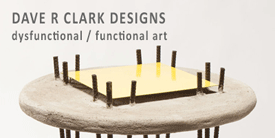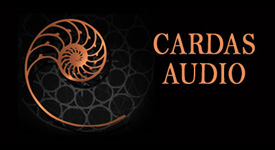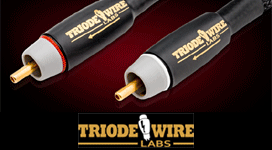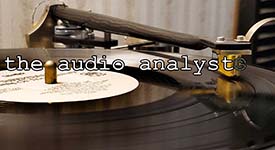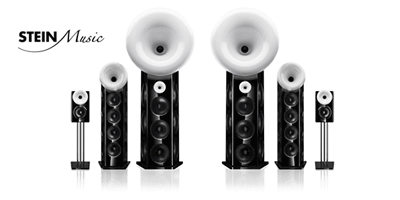Detailed Description of My All Transformer-Coupled 2-Stage LCR phono preamp:
As many of my ultra-fi audio friends know, I have been a strong advocate of LCR phono preamplifiers for a number of years. My current design is an all-vacuum tube 2-stage transformer-coupled unit, with an external power supply unit. The audio transformers are made by Lundahl and Sowter.
The preamplifier chassis uses a pair of Siemens D3A triode-connected pentodes per channel. The output of the first D3A is transformer-coupled to the all-discrete components 600-ohm LCR network. This is followed by a Sowter 600 ohm to 10K ohm line-level step-up transformer, which drives the grid of the second D3A gain stage. This second gain stage is transformer-coupled to my external transformer volume control (TVC). Each D3A stage is decoupled with large value Lundahl audio chokes, and GE 97F-series oil and polypropylene motor running capacitors. The overall gain is 44 dB at 1 kHz.
Between the preamp and my power amplifiers, only four cascaded triode vacuum tube gain stages per channel are required to play a record. No coupling capacitors are used anywhere in this preamplifier design.
The D3As employ LED bias; as such, there are no cathode resistors or poor sounding electrolytic cathode bypass capacitors in the signal path, and in my experience, LED bias sounds better (when the LEDs are drawing a lot of current), than a cathode resistor shunted by a large value electrolytic. Your mileage may of course vary.
The outboard moving-coil step-up transformer units are the Dave Slagle EMIA silver-wound units, with 17 dB of voltage gain. Aside from being the best sounding MC-SUTs I have ever heard, they were selected for optimum gain without overdriving the first D3A gain stage of my preamp when playing very “hot” records.
Remember, all records using the RIAA standard are recorded with substantial rising HF boost/pre-emphasis above 1 kHz, and this can easily overdrive the front end of any preamp if you have too much voltage gain from the MC-SUT.
The Slagle EMIA MC-SUT output impedance was also specified to minimize the first-order filter HF roll-off from the triode-connected first gain stage Miller capacitance, which is prominent due to the high amplification factor of the triode-connected D3As.
The external outboard choke-input power supply (PSU) uses four 12AX4GTB TV damper diode tubes in a bridge rectifier configuration, and a substantially oversized 275 volt at 300 mA electrostatically-shielded and potted power transformer. Three cascaded low DCR potted filter chokes are used for power supply smoothing, in conjunction with GE 97F-series oil and polypropylene filter capacitors. I have a large electronics junk box, so all of the power supply magnetics were fortunately on-hand.
DC heating of the D3As is provided by a spare raw DC supply assembly I had obtained from Rod Coleman some time ago.
As with all of my homebrew audio creations, two on-off power switches are used; one for applying filament/heater power to the D3As; and the second switch energizes the heaters for the rectifier tubes, providing a very graceful application of the high voltage to the D3As. The PSU is connected to the preamplifier chassis by a 3.5-foot umbilical interconnecting cable, terminated with Amphenol MS-type Military Standard connectors at each end. The chassis for the PSU (less the newly machined 0.125-inch thick top plate) is recycled from a previous phono preamp I had built close to 25 years ago.
The preamp and power supply units adhere to the same standard of industrial design and aesthetic I have practiced for the last 30 years; lots of exposed stainless steel screw heads, overbuilt construction, and painted in the color I always use for all of my audio and ham radio electronics equipment; Hewlett-Packard Mint Gray, in a textured, oven-bake enamel finish. Forgive my sense of practicality, but the contemporary appearance of much modern commercially-made high-end audio equipment, in exotic woods and gold-plating, etc., has never really appealed to me. I’d rather put my money into the quality of the electrical components instead.
Listening Impressions
Unlike most vacuum tube-based phono preamplifier circuits, which frequently use the ubiquitous 12AX7 or 6DJ8/ECC-88 as the first gain stage, this LCR phono preamp is incredibly quiet. There is no power supply 120 Hz hum modulation or microphony from the D3As, and the tube noise is extremely low, due to the very low plate resistance (Rp) of the D3As, and the minimal Johnson noise contribution of the first gain stage.
It is lightning fast and incredibly dynamic, with a very pure, open, clear, natural, effortless, and colorful sound quality, with zero listening fatigue.
Very, very stereo sounding. It is a wonderful and synergistic match to my 2-stage transformer-coupled 45-WE300B single-ended power amplifiers, and Altec A-5 horn-loaded speakers.
Update from November, 2023: The original design that I thought I could never really improve upon, used a pair of the now long-discontinued Stevens and Billington (S & B) EQ600 LCR RIAA 600 ohm equalization networks. These are sealed units, based upon the classic Tango EQ-600P design, and there is no possibility of opening them for parts inspection or modification.
I always considered this to be a serious weak point in any sealed LCR network, such those offered by Tango, Silk Audio, and other suppliers. You simply have no idea as to the type and quality of the inductors, capacitors and resistors used in these networks, as well as their electrical tolerances. The tolerance of the inductors, capacitors, and resistors that comprise these networks are extremely critical, so as to maintain the best possible RIAA playback accuracy.
And another major point; you can’t “tune” the network in-circuit by varying the component values in these sealed LCR networks to achieve the best possible RIAA playback accuracy.
That said, and not wanting to be at the mercy of something for which I have no idea as to what is inside the sealed S & B LCR networks, I decided to build my own to replace the S & B units, using all discrete and best-of-breed inductors, capacitors, and resistors.
I had to machine two adapter plates to allow all of these components to fit over the two large openings that were required to originally mount the pair of S & B EQ600 LCR modules. A 28-turret terminal board was used for mounting all of the resistors and capacitors.
I used polypropylene film and tin foil capacitors for the low-frequency boost pole, and polystyrene and foil capacitors for the high-frequency cut pole of the network. My experience with these types of capacitors for high-end audio use is that they are superb sonically. The high and low-frequency inductor assemblies are made by Hashimoto, their model H-EQL. Your mileage may of course vary, but since you’re rolling your own LCR network, you can use what component parts sound best to your ears and in your system.
Although these capacitors are not directly in the audio signal path (they are in parallel to ground with the LF and HF inductors), their quality will still have a major impact as to the sonics of the network.
Note that I built this LCR network to one of three circuit versions suggested by Hashimoto. I built the version with the highest capacitor and resistor count, as this version offers the most accurate RIAA playback accuracy when terminated in the required 600 ohm load impedance. Hashimoto specifies this as +/- 0.2 dB, from 20 to 20 Khz.
I must admit that I was not prepared for the level of improvement when compared to the sonics provided by the S & B LCR modules, as good sounding as they were. The improvement with the all-discrete LCR network is not subtle. The bass is substantially more extended and powerful, and the high end is more open and airy, with an enormous room-filling soundstage. Again, very, very stereo-sounding.
I don’t attribute this to a more accurate RIAA playback response, but rather to the quality of the capacitors I had used in the network. With the S & B EQ600s, my preamplifier maintained a measured RIAA playback accuracy of +/- 0.5 dB from 20 hz to 20 Khz. The measured RIAA playback accuracy with the new network with all-discrete components is somewhat better, at +/- 0.25 dB over the same frequency range. I suspect that I can improve this further by tuning the R & C component values within the network, but I don’t think it’s worth the effort.
The one big sonic advantage of LCR equalization in a phono preamp is the complete absence of the large value series-loss resistor as used within the classical RC RIAA reproduce network. My experience is that any resistor within the signal path, including speaker crossover networks, and regardless of its audiophile-endorsed sonic attributes, simply kills the dynamics, and reduces the clarity and naturalness of the sound. The DC series resistance of the two series-connected inductors within a well-designed LCR network is on the order of 35 ohms or less. Compare that with the series-loss resistor within a typical RIAA RC EQ network; you could be looking at 10,000s of ohms of resistance within the signal path.
In summary, my suggestion for those wishing to build their own LCR phono preamplifier, is to build your own LCR network, and to completely forget about using a sealed network. Yes, the circuit layout and integration are much simpler with a sealed LCR network, but you are completely at the mercy of the manufacturer in terms of the component quality used in their network, and the resulting sonics.
Please click on the link below to go the next page.

